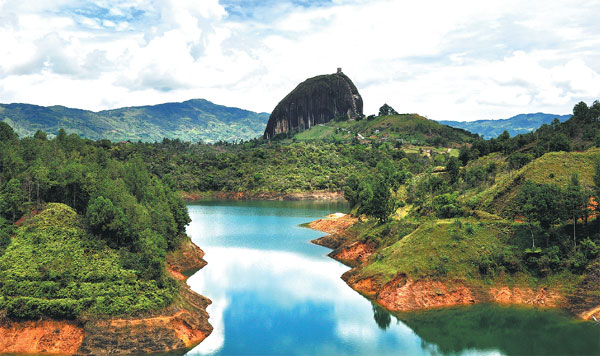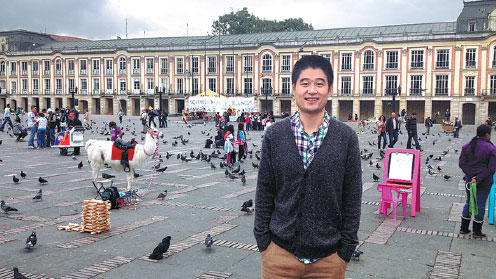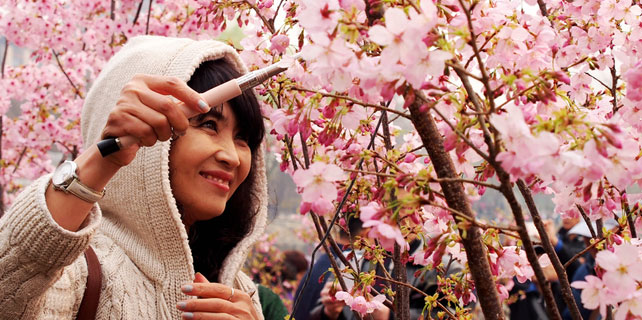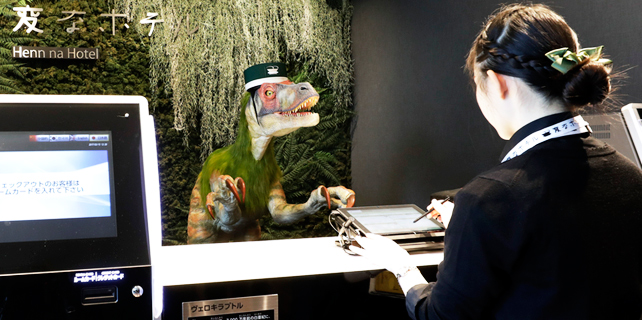Colombia calling
Colombia is making a serious push to attract more Chinese visitors. Xu Lin reports.
For most Chinese tourists, Colombia represents picturesque scenery, Latin American culture and the magic realism of Nobel Prize winner Gabriel Garcia Marquez. They can actually do a tour called Gabo's Route to places where he lived and join gastronomical tours to taste the dishes he mentions in his books.
Last year, the Colombian government reached a peace deal with the Revolutionary Armed Forces of Colombia, ending a more than five-decade armed conflict.
This makes it safer to travel to the country, and some areas are being opened to tourists for the first time in decades.
Colombia is very keen to boost its tourism sector and attract more Chinese travelers in the post-conflict era. To better reach the Chinese market, ProColombia recently unveiled its official WeChat account to offer Chinese travelers information about the country's tourism resources and culture.
ProColombia is the Colombian government's promotion agency in charge of exports, tourism and investment from abroad.
"It's crucial to promote Colombia as a destination on social media as many Chinese use it to decide where to spend their holidays. We must be present on the platform to promote Colombia as an ideal destination for vacations," says ProColombia's president Felipe Jaramillo, who attended the launch of the WeChat account at the Colombian embassy in Beijing.
WeChat is one of the most important social media platforms in China and reported in November that it had 846 million active users on average every month.
ProColombia has also launched an e-learning platform - China Travel Academy - for Chinese travel agencies interested in promoting Colombia as a tourist destination.
They can access it through their smartphones by scanning a QR code and communicating online with others who are using the platform.
Jaramillo says: "Our tourism industry is growing fast since the peace agreement. Tourism has become the second largest source of foreign currency in Colombia, surpassing coffee and flowers."
Between 2010 and 2016, 185 hotels were opened in the country, including some international brands.
Jaramillo says that tourists from China and other Asian countries will play a crucial role in the growth of the tourism industry.
Since 2015, Chinese citizens with US or Schengen visas can enjoy visa-free travel to Colombia, and the Colombian government is working to extend this to those with Canadian visas.
In 2016, the number of Chinese tourists traveling to Colombia was 13,280, 14.1 percent more than in 2015.
In 2014, the number was 8,075, and it jumped by 44 percent to 11,630 in 2015.
Chinese travelers to Colombia are primarily interested in nature and culture, Jaramillo says. They love the coastline and islands, and visit the Amazon rainforest and cultural heritage sites. They also take cruises.
Their must-see places include the capital Bogota, Medellin - the country's second largest city - and the Coffee Cultural Landscape, a UNESCO World Heritage Site.
"We are working on having more Chinese guides, menus translated into Chinese and Chinese food in Colombia," Jaramillo says.
The government is working to position the country as a destination for bird-watching. The country boasts more than 1,900 species of birds, 79 of which are endemic.
On the culture side, Colombia has more than 365 fairs and festivals throughout the year.
In early January, people color their faces to celebrate racial equality in the Black and White Carnival in Pasto. In August, flower cultivators take part in a parade called the Flower Festival in Medellin.
The country is also promoting its tourism with other countries of the Pacific Alliance - Mexico, Peru and Chile.
Jaramillo says that as Latin America is far from China, it makes sense for Chinese to visit more than one country when they are in the region.
"If I have to only use three words to describe Colombia, I would say peace, friendliness and fashion," he says.
Shen Yibing, a Spanish teacher from a university in Chongqing, agrees.
"The locals are willing to help you when you are in need. I made many friends there and often miss them," says the 36-year-old, who returned home in March 2016 after spending two years in Medellin teaching at a university as part of an exchange program.
Shen says that about two months after he arrived at Medellin, he returned home one night to see an elderly couple who lived next door waiting for him to celebrate his birthday.
"I was amazed and touched by their kindness. They knew it was my birthday from my Facebook account and even printed Chinese characters that mean 'happy birthday'," he says.
Contact the writer at xulin@chinadaily.com.cn
|
Colombia's Cartagena (left), Medellin (middle) and San Agustin (right) are popular destinations among tourists. The country boasts rich nature and culture that include coastline, islands, rainforest and heritage sites. Photos Provided To China Daily |
|
Tourists can explore the impressive reservoir at El Penol town near Medellin. |
|
Shen Yibing, from Chongqing, spends two years in Colombia for an exchange program and says he's deeply impressed by the friendliness of the people. |
(China Daily USA 03/20/2017 page9)



















